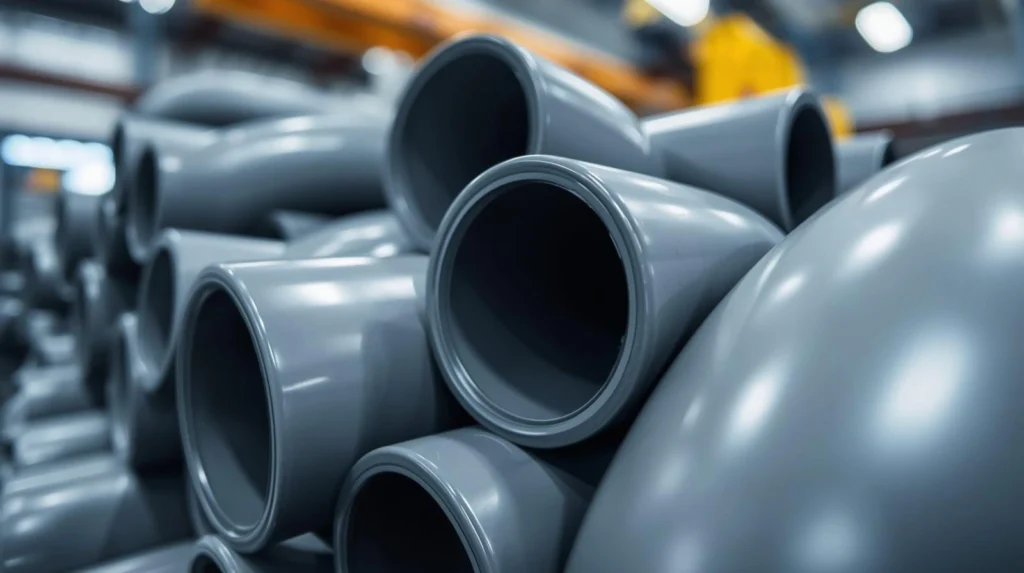Can one material truly withstand Pakistan’s extreme climate while maintaining optimal performance over decades?
In a country like Pakistan, where the climate ranges from extreme heat to cold, with frequent monsoons and seismic activity, infrastructure durability is more than just a concern—it’s a necessity. When it comes to water distribution, energy transmission, and agricultural irrigation, choosing the right materials is critical for ensuring long-lasting, efficient operations. Among the options, HDPE (High-Density Polyethylene) pipes are often touted as a superior solution.
In this blog post, we will explore whether HDPE pipes truly stand the test of Pakistan’s harsh conditions. By diving into their durability, resistance factors, and long-term benefits, we’ll reveal how HDPE pipes are not just a temporary fix but a reliable, sustainable choice for water distribution and more.
Are HDPE Pipes Resistant to Pakistan’s Extreme Weather?
How Do HDPE Pipes Perform in High Heat?
Pakistan experiences some of the hottest temperatures globally, especially in its southern and central regions, where temperatures can reach over 50°C (122°F) in the summer. The extreme heat can cause significant stress on traditional pipes, leading to cracks, leaks, and reduced system lifespan.
HDPE pipes, on the other hand, are designed to withstand high temperatures. Their flexibility allows them to expand and contract with temperature fluctuations without cracking. Unlike concrete or steel, HDPE’s chemical composition ensures it doesn’t degrade under UV exposure or high heat. This makes HDPE pipes an excellent choice for areas in Pakistan like Sindh and Balochistan, where the temperature can soar to extreme levels.
Case Study: HDPE Pipes in Sindh’s Desert Regions
In the desert regions of Sindh, where the temperatures are among the highest in the country, HDPE pipes have been used for water supply systems. These pipes have shown remarkable performance in maintaining water delivery under high heat, with minimal repairs required compared to older, traditional materials. This has led to a reduction in maintenance costs and fewer interruptions to the water supply.
Pro Tip: Choosing the Right Pipe Grade for High-Temperature Areas
For areas with extremely high temperatures, it’s crucial to select HDPE pipes that are specifically designed for high-temperature resistance. Grade PE 100 pipes, for example, are more suitable for such environments due to their enhanced thermal properties.
Can HDPE Pipes Handle Pakistan’s Monsoon Season?
How Do HDPE Pipes Fare During Heavy Rain and Flooding?
Pakistan’s monsoon season brings heavy rains that can lead to flooding, soil erosion, and debris accumulation. Traditional pipes like steel and cast iron often suffer from corrosion and blockage when exposed to such conditions. However, HDPE pipes stand out due to their superior resilience to water and chemicals.
These pipes have several advantages in flood-prone regions:
- Corrosion Resistance: Unlike metal pipes, HDPE does not rust, meaning that it is unaffected by prolonged exposure to water.
- Waterproof Seals: HDPE pipes are joined using a heat fusion method, ensuring that they form leak-proof seals that prevent water infiltration.
- Flexibility: The flexibility of HDPE pipes means they can withstand shifting soil and debris without cracking, reducing the risk of system failure.
Case Study: HDPE Pipes in Punjab’s Flood-Prone Areas
In flood-prone districts of Punjab, HDPE pipes were chosen to replace traditional cement pipes for stormwater drainage systems. These pipes were able to handle the volume of water during the peak monsoon season without experiencing the same issues as the old infrastructure. The result was a more reliable and efficient drainage system, even during extreme weather conditions.
Pro Tip: Proper Installation is Key During Flood Seasons
Even though HDPE pipes are highly durable, the installation process is crucial. In flood-prone areas, ensure that pipes are properly secured to prevent displacement and to ensure that the joints are fused correctly.
Do HDPE Pipes Endure Pakistan’s Seismic Activity?
Are HDPE Pipes Suitable for Earthquake-Prone Areas?
Pakistan lies in a seismically active zone, with frequent earthquakes that pose a threat to infrastructure. Many conventional piping systems, such as those made from ceramic, cement, or steel, can break or crack under seismic stress.
HDPE pipes are more flexible than rigid pipes, which allows them to absorb the shock of an earthquake without cracking or breaking. They can bend and stretch without permanent deformation, which makes them ideal for installation in earthquake-prone areas like the northern regions of Pakistan.
Case Study: HDPE Pipes Used in the Earthquake Recovery Efforts of 2005
In the aftermath of the devastating 2005 earthquake, HDPE pipes were used in the rebuilding of the water supply systems in Azad Kashmir and Khyber Pakhtunkhwa. Due to their flexibility and shock resistance, the HDPE pipes performed exceptionally well, reducing the need for costly repairs and replacements post-earthquake.
Expert Insight: Prioritize Flexible Joints for Earthquake Resilience
When installing HDPE pipes in earthquake-prone areas, it’s essential to focus on flexible joint systems that allow for movement without compromising the integrity of the pipeline. This ensures the longevity of the infrastructure during seismic events.
How Long Do HDPE Pipes Last in Pakistan’s Harsh Conditions?
What Is the Lifespan of HDPE Pipes in Extreme Environments?
HDPE pipes are known for their impressive longevity, especially when compared to traditional materials like metal or concrete. Under normal conditions, HDPE pipes can last 50 years or more. However, in extreme climates like Pakistan’s, their lifespan may still remain robust due to their resistance to corrosion, UV degradation, and the high pressures involved in water distribution systems.
The longevity of HDPE pipes depends on several factors:
- Installation Quality: Proper installation ensures that pipes last longer.
- Environmental Conditions: Areas with high UV exposure may require UV-resistant coatings to extend the lifespan of the pipes.
- Maintenance: Although HDPE pipes are low-maintenance, regular inspections are still recommended to ensure their optimal performance.
Pro Tip: Implement Preventive Maintenance for Maximum Lifespan
Even with HDPE pipes, periodic checks to ensure that the pipes are free from external damage (e.g., crushing or puncturing) can extend their lifespan even further. This is especially important in urban and industrial environments.
Are HDPE Pipes a Cost-Effective Solution for Pakistan?
How Do HDPE Pipes Compare to Other Materials in Terms of Durability and Cost?
While HDPE pipes are slightly more expensive upfront than traditional materials like PVC or concrete, their durability and long-term savings make them a cost-effective solution. Over time, the reduced maintenance costs, fewer replacements, and improved water efficiency offset the initial investment. For a country like Pakistan, where infrastructure failures can be costly, HDPE pipes present a smart, future-proof choice.
Case Study: Cost Analysis in Lahore’s Water Distribution System
A comparison of different types of pipes used in Lahore’s water distribution system revealed that although the initial cost of HDPE pipes was 10-15% higher than concrete pipes, the total lifecycle cost—factoring in maintenance, repairs, and replacements—was 40% lower. This underscores the long-term cost efficiency of HDPE pipes.
Pro Tip: Factor in Long-Term Savings When Budgeting for HDPE Pipes
When planning your budget for water distribution systems or pipelines, always consider the long-term benefits. While the initial installation cost might be higher, the durability and minimal maintenance of HDPE pipes will save money in the long run.
Conclusion
In Pakistan’s harsh climate—where temperatures soar, floods inundate, earthquakes shake, and water scarcity threatens agriculture—HDPE pipes have proven themselves as a durable, reliable, and cost-effective solution for water supply systems, irrigation, and infrastructure. Their resistance to heat, water, chemicals, and seismic events makes them a long-lasting investment, especially in a country that needs to adapt to its challenging conditions.
For businesses, municipalities, and farmers, switching to HDPE pipes can significantly reduce maintenance costs, enhance system reliability, and increase the longevity of critical infrastructure. If you’re looking for a durable, long-term solution to your water distribution challenges, HDPE pipes are undoubtedly the most reliable choice for Pakistan’s harsh climate.
FAQ Section
1. How long do HDPE pipes last in Pakistan’s extreme conditions?
HDPE pipes can last up to 50 years or more, even in harsh climates, due to their resistance to corrosion, UV exposure, and seismic stress.
2. Are HDPE pipes resistant to high temperatures?
Yes, HDPE pipes are designed to withstand high temperatures and can function efficiently even in regions where temperatures exceed 50°C (122°F).
3. How do HDPE pipes handle flooding and waterlogged conditions?
HDPE pipes are resistant to corrosion and do not degrade in water, making them ideal for flood-prone areas where traditional materials would corrode or crack.
4. Can HDPE pipes withstand earthquakes?
Yes, HDPE pipes are highly flexible, allowing them to absorb the shock of earthquakes without cracking or breaking, making them suitable for seismic regions.
5. What makes HDPE pipes more cost-effective than other materials?
While the upfront cost of HDPE pipes is slightly higher, their long lifespan, low maintenance, and reduced need for replacements make them a more cost-effective option over time.
6. Are HDPE pipes environmentally friendly?
Yes, HDPE pipes are made from recyclable materials, and their long lifespan reduces the need for frequent replacements, contributing to sustainability efforts.


